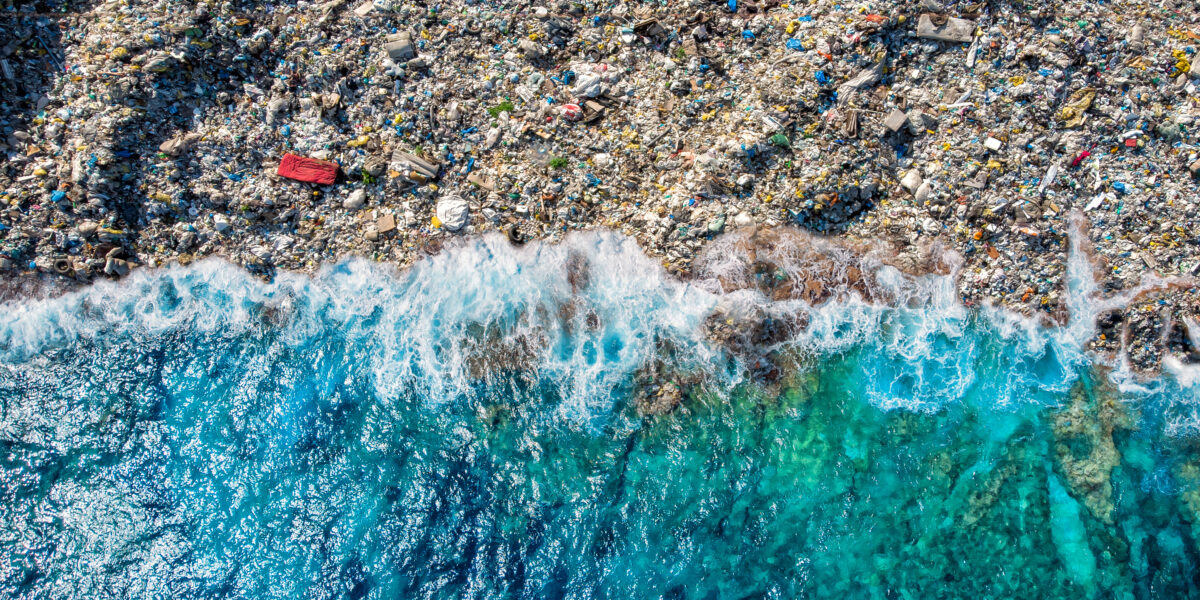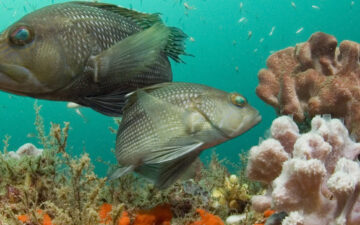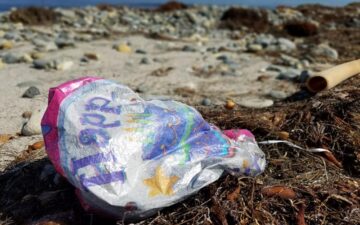Bringing redesign for recyclability into the plastic pollution dialogue
We at The Ocean Foundation applaud the recent report the #breakfreefromplastic Movement published in June 2021, “Missing the Mark: Unveiling corporate false solutions to the plastic pollution crisis”.
And while we remain in general support of efforts seeking to manage the plastic waste already on our beaches and in our ocean – including addressing waste management and recycling as well as promoting consumer plastic use reduction – it is worth exploring whether some approaches taken by consortiums, companies and nonprofits are really “false solutions”.
Over 90% of all plastic is not recycled, or cannot be recycled. It is too complex and often too customized to contribute to the circular economy. Manufacturers mix polymers (which come in a multitude of formulations), additives (such as flame retardants), colorants, adhesives and other materials to make different products and applications, or just to include advertising labels. This has led to the plastic pollution crisis we face today, and the problem is only set to get worse, unless we plan ahead for our future.
For the past few years, The Ocean Foundation’s Redesigning Plastics Initiative has been raising the flag to recognize the missing piece of our global plastic pollution challenge: How can we change the way plastics are made in the first place? How can we influence polymer chemistry to redesign for recyclability? By redesign, we are pointing to the polymers themselves — the building blocks of plastic products that many of us use in daily life.
Our discussions with potential philanthropic, nonprofit and corporate partners have absolutely reflected the two central issues raised in this groundbreaking report:
- “A lack of ambition and prioritization of alternative product delivery methods at a systemic level that would allow for a dramatic reduction in the use of single-use plastic; and
- An over-abundance of investment in and prioritization of false solutions which allow companies to continue the business-as-usual reliance on single-use plastic packaging.”
Through our Redesigning Plastics Initiative, we will pursue science-informed national legislation in plastic-producing countries to require reengineering of the chemistry of plastic itself, redesigning of plastic products and limiting what is made from plastic. Our initiative will move this industry from Complex, Customized and Contaminating to make plastic Safe, Simple and Standardized.
In almost every conversation with a potential partner, our approach has been validated as the real way to influence systemic change.
Yet in the same conversation, we field the familiar reaction that we are ahead of our time. The corporate community and some philanthropists are investing in clean-ups and waste management – solutions that shift the burden to focus on consumer behavior and municipal waste management failure; and away from resin and plastic product makers. That is like blaming drivers and cities rather than oil companies and auto manufacturers for carbon emissions.
Some parts of the NGO community are thus fully in their rights to call for outright bans of production and use of single-use plastic – we have even helped write some of that legislation. Because, after all, prevention is the best cure. We are confident we can take this prevention further, and go directly to what we are producing and why. We believe that polymer redesign is not too difficult, not too far into the future, and is actually what customers want and societies need to make plastic part of the circular economy. We are proud of being out ahead with next generation thinking to address plastic pollution.
We think we are right on time.
Missing the Mark highlights that: “Procter & Gamble, Mondelez International, PepsiCo, Mars, Inc., The Coca-Cola Company, Nestlé and Unilever are each in the driver’s seat on decisions that result in the plastic packaging they put on the market. These companies’ business models, and those of their counterparts across the packaged goods sector, are among the root causes and drivers of plastic pollution… Collectively, these seven companies generate more than $370 billion in revenue each year. Consider the potential if these companies collaborated to direct funds towards real, proven solutions instead of wasting their money on marketing campaigns and other distractions.” (Page 34)
We recognize that there are plastic applications of genuine value to society, even though plastic is harmful in its manufacture, use and disposal. We identify those uses that are most valuable, necessary and beneficial and ask how to reinvent them so that they can continue to be used without harming human and environmental health.
We will identify and develop original science.
In the near term, The Ocean Foundation’s focus is set on laying the best scientific foundation to inform our initiative. We are actively seeking scientific partnerships to bring the following solutions to fruition. Together with policymakers, scientists, and the industry, we can:
RE-ENGINEER the chemistry of plastic to reduce complexity and toxicity–making plastic simpler and safer. Various plastic products or applications leach chemicals into food or drink when exposed to heat or cold, affecting humans, animals and maybe even plant life (think of smelling plastic gassing off in a hot car). In addition, plastic is known to be “sticky” and can become a vector for other toxins, bacteria and viruses. And, new studies suggest bacteria may be transferred across the ocean via plastic pollution in the form of floating bottles and marine debris.
RE-DESIGN plastic products to reduce customization–making plastic more standardized and simpler. Over 90% of all plastic is not recycled or cannot be recycled. It is too complex and often too customized to contribute to the circular economy. Manufacturers mix polymers (which come in multiple formulations), additives (such as flame retardants), colorants, adhesives and other materials to make different products and applications, or just to include advertising labels. This often means that products are made up of various layers of plastic film that turn otherwise recyclable products into unrecyclable single-use pollutants. These ingredients and layers cannot be easily separated.
RE-THINK what we make from plastic by choosing to limit plastic production only to its highest and best uses–making a closed-loop possible through reuse of the same raw materials. Legislation will outline a hierarchy which identifies (1) uses that are most valuable, necessary, and beneficial to society for which plastic represents the safest, most appropriate solution that has near-term and long term benefits; (2) plastics that have readily available (or readily designed or designable) alternatives to replaceable or avoidable plastic; and (3) pointless or unnecessary plastic to be eliminated.
The problem of plastic waste is only increasing. And while waste management and reduced plastic use tactics are well intentioned solutions, they aren’t quite hitting the mark in addressing the larger and more complicated issue. Plastics as they stand are not designed for maximum recyclability — but by collaborating and directing funds towards redesigning plastics, we can continue to use the products we value and rely on in safer, more sustainable ways.
50 years ago, no one anticipated plastic production would lead to the global pollution and health crisis we face today. We now have an opportunity to plan ahead for the next 50 years of production, but it will require investing in forward-thinking models that address the problem at its source: the chemical design and production process.







